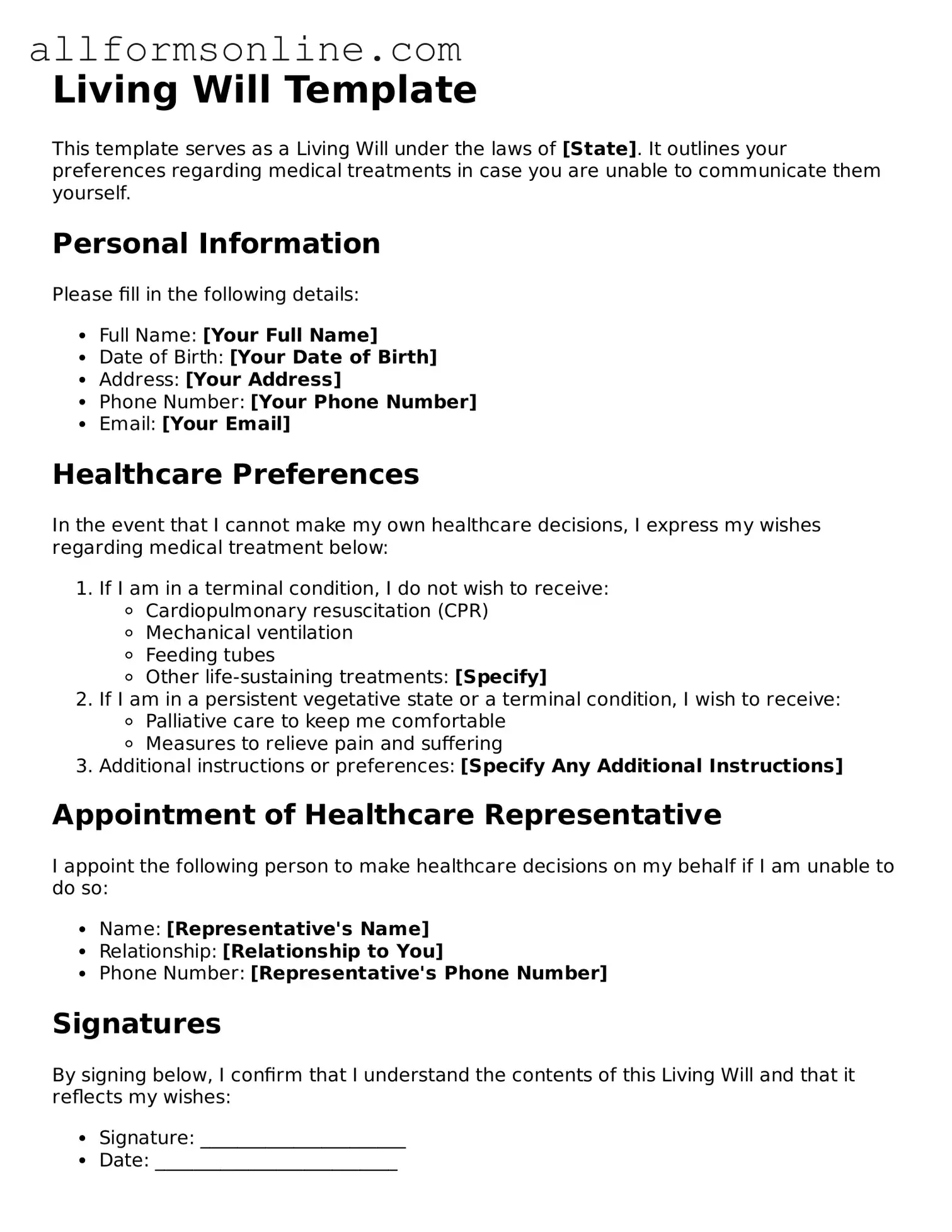What is a Living Will?
A Living Will is a legal document that outlines your preferences for medical treatment in case you become unable to communicate your wishes. It typically addresses situations where you are terminally ill or in a persistent vegetative state. By creating a Living Will, you ensure that your healthcare providers and loved ones understand your desires regarding life-sustaining treatments.
Why should I create a Living Will?
Creating a Living Will is essential for anyone who wants to have a say in their medical care. It provides clarity during difficult times, relieving your family from the burden of making tough decisions on your behalf. A Living Will can also help avoid potential conflicts among family members regarding treatment options, ensuring that your wishes are respected.
What should I include in my Living Will?
Your Living Will should specify the types of medical treatments you do or do not want. Common topics to cover include resuscitation, mechanical ventilation, tube feeding, and pain management. You might also want to include your preferences for organ donation. It's important to be as clear and specific as possible to avoid any confusion later on.
How do I create a Living Will?
To create a Living Will, you can use templates available online or consult with an attorney for guidance. Make sure to follow your state’s requirements, as they can vary. Generally, you will need to sign the document in front of witnesses or a notary public. Once completed, share copies with your healthcare provider and family members.
Can I change or revoke my Living Will?
Yes, you can change or revoke your Living Will at any time, as long as you are mentally competent. To make changes, simply create a new document that clearly states your updated wishes. Be sure to destroy the old version and inform your healthcare providers and family members about the changes to ensure everyone is on the same page.
Is a Living Will the same as a Power of Attorney?
No, a Living Will and a Power of Attorney are different documents. A Living Will focuses specifically on your medical treatment preferences, while a Power of Attorney allows you to designate someone to make decisions on your behalf, including financial and legal matters. You may choose to have both documents to ensure comprehensive planning for your future.
Where should I store my Living Will?
Store your Living Will in a safe but accessible place. It's a good idea to keep a copy in your medical records and provide copies to your healthcare provider, family members, and anyone designated as your healthcare proxy. Make sure that those close to you know where to find it in case of an emergency.
